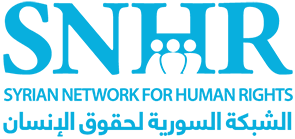
Summary of the study:
The researcher Fadel Abdul Ghany, Director of the Syrian Network for Human Rights (SNHR), presented a study entitled “The Convention on the Rights of the Child and Its Committee Are Helpless in Effectively Defending Children Rights in Syria and Around the World”, as part of his course studies for his Master’s degree in International Law at De Montfort University in the United Kingdom. In the study, he examined the UN Convention on the Rights of the Child (UNCRC) and the related Committee on the Rights of the Child (CRC), making a number of proposals to enable it to realize its role more fully, with the study presenting Syria as a case study model.
The 14-page study notes that treaties must be binding on States that ratify them, and that such treaties often provide for the establishment of international commissions composed of an independent group of experts, to monitor the implementation and commitment of States that have ratified the treaties, with these actions supposed to strengthen the human rights situation in these States.
As the study further notes, the Convention on the Rights of the Child is distinguished from other international conventions in that it is the convention most widely ratified by the world’s nations, with almost all states being parties to it; this convention is remarkable in that it not only refers to the economic, social, political, cultural and civil rights of the child in peace situations, but also focuses on the need for member states to respect the rules of international humanitarian law applicable in situations of armed conflict related to children, and also focuses on the status of the refugee child.
The study goes into some detail in talking about the Committee on the Rights of the Child, established under the convention, which comprises 18 experts in the field of children’s rights, whose main function is to monitor the extent to which the member states comply with the convention and the two additional protocols. This is achieved through the reporting mechanism, whereby signatory states must report to the committee on the measures they have adopted to give effect to the rights recognized in the present convention and on the progress made in the implementation of those rights, as well as on any difficulties faced by States which have prevented them from meeting their obligations. Every report should contain comprehensive and detailed information; to this end, the committee has developed guidelines specifying the requirements for the form and content of reports. The committee is required to review the report submitted by the state and compare it with the committee’s monitoring, and with the reports of local and international human rights organizations monitoring child rights in that country. The committee then issues observations on the extent of the State’s commitment.
The study poses a question: “What comes after the Committee has issued its observations, i.e. How can the treaty and the Committee on the Rights of the Child provide effective protection to prevent future recurrences of violations, and impose some kind of sanctions on a government that has violated the articles of the convention?”
The study then attempts to accurately answer this question, stating that neither the Convention nor the Committee on the Rights of the Child can do anything more than submit observations on governments’ reports, which are often ignored by the government of the state in breach of the convention, with the state in question continuing to commit violations, and possibly even being encouraged by this impunity to commit further violations. As the study reveals, this is what actually happens with many states worldwide, meaning that in reality the convention and reports issued by the Committee on the Rights of the Child have no real value in defending any real children’s rights following violations, or in preventing the violations themselves from taking place. To provide clear and irrefutable proof of this observation, the study deals with the case of the Syrian government and analyzes this as a striking example of a state party to the convention which has blatantly violated children’s rights for years, with no significant action taken against it.
The paper notes that despite Syria’s ratification of the Convention on the Rights of the Child since 1993, children in Syria, particularly since March 2011, the date of the start of the popular uprising for democracy, have been subjected to a wide variety of horrendous violations, including threats to their most fundamental rights. This situation has now deteriorated to the point at which the Syrian government is internationally acknowledged as the worst in the world in dealing with children across the entire spectrum of violations, including; torture, enforced disappearance, sexual violence, denial of education, bombing of schools, forced displacement, extrajudicial killings, arbitrary detention, recruitment, deprivation of nationality, etc. Throughout the past nine years, as the study explains, these violations have become systematic and widespread to the extent where they constitute crimes against humanity and war crimes, according to the reports of the Independent International Commission of Inquiry on the Syrian Arab Republic and international human rights organizations. The study states that it should be assumed that the Convention and its Committee must play an effective role in the protection of children’s rights in Syria.
The study reviews the reports submitted by the committee to the Syrian government, and the reports submitted by the Syrian government in response, concluding through reviewing all of this material that the Convention on the Rights of the Child and its Committee have seriously failed to guarantee even the bare minimum of basic rights for children in Syria. The study details this within four main areas, including analysis of UN reports that prove the Syrian government’s involvement in gross violations of children’s rights, and secondly, the same government’s systematic violation of most articles of the Convention on the Rights of the Child, in a deliberate, systematic, stereotypical and widespread manner. The Government of the Syrian Arab Republic, as a State party to the Convention on the Rights of the Child and its Optional Protocol on Children and Armed Conflict, has the primary responsibility for ensuring the protection of children throughout its territory. However, this government has not only failed to protect children but has also practiced the most egregious abuses against them. The study details the articles of the Convention that each of the aforementioned practices of the Syrian government violates.
The third area of the study focuses on the misleading report submitted to the committee by the Syrian government, and the corresponding response from the Committee for the Rights of the Child, which the study describes as weak and shameful, with the Syrian government, in its report – whose release it deliberately postponed for nearly two years – failing to recognize or acknowledge any of the violations it committed during the years covered by the report –from 2012 to April 2017- apportioning full responsibility for all crimes to terrorist organizations, such as Al-Nusra Front and ISIS. The government report focused on the new constitution and its articles and went into some detail on the reform of domestic laws. It also denied that the Syrian government had killed or maimed any child, in addition to denying the reports of the UN Secretary-General outlining accusations against the Syrian government. The study finds that this was to be expected from the government of an authoritarian dictatorship, while describing the response of the Committee on the Rights of the Child to this report as shameful, as it included, in its entirety, a request to the Syrian government to provide further clarifications and information, along with statistics and data, and to detail what steps would be taken by the Syrian government to address some of the issues, while the report containing the Syrian Government’s response contained strong terms of reproach and denial, with the government accusing the committee of making false allegations against the Syrian government itself.
The study stresses that the text of the convention and its contents positively reflect its authors’ sincere desire to achieve the highest humanitarian standards in protecting the rights of the child; however, it lacks, in essence, any mechanisms of practical oversight and punitive and operational deterrent to discourage the States that have ratified the convention from violating its articles. Finally, the study presents proposals to reform the convention and seriously activate its role.


